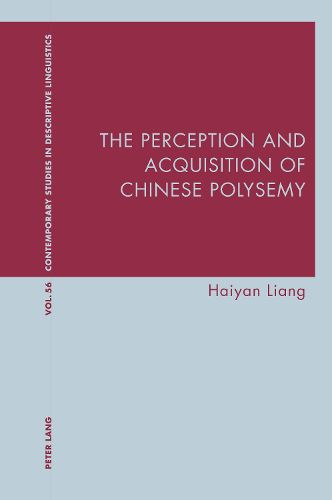Readings Newsletter
Become a Readings Member to make your shopping experience even easier.
Sign in or sign up for free!
You’re not far away from qualifying for FREE standard shipping within Australia
You’ve qualified for FREE standard shipping within Australia
The cart is loading…






This title is printed to order. This book may have been self-published. If so, we cannot guarantee the quality of the content. In the main most books will have gone through the editing process however some may not. We therefore suggest that you be aware of this before ordering this book. If in doubt check either the author or publisher’s details as we are unable to accept any returns unless they are faulty. Please contact us if you have any questions.
Polysemous lexical items have multiple senses associated with a single form, and these senses are interrelated. Polysemy is a universal and omnipresent phenomenon, providing a robust tool to convey creatively our ideas and thoughts. As a result, polysemy presents challenges for second language (L2) learners.
Existing studies on the issue of polysemy in language acquisition often rely on researchers' subjective understandings of the network of meanings around a lexical item or focus on English examples. Yet Chinese lexis exhibits greater polysemy than English and deserves its own examination. This book takes one Chinese polysemous item as an example to explore how native (L1) speakers and L2 learners perceive its multiple senses as well as how these senses are acquired by L2 learners. This book also investigates the predictive strengths of various factors that contribute to the acquisition pattern. A multidisciplinary approach is adopted to achieve these objectives, including methods from cognitive linguistics, psycholinguistics, and corpus linguistics.
$9.00 standard shipping within Australia
FREE standard shipping within Australia for orders over $100.00
Express & International shipping calculated at checkout
This title is printed to order. This book may have been self-published. If so, we cannot guarantee the quality of the content. In the main most books will have gone through the editing process however some may not. We therefore suggest that you be aware of this before ordering this book. If in doubt check either the author or publisher’s details as we are unable to accept any returns unless they are faulty. Please contact us if you have any questions.
Polysemous lexical items have multiple senses associated with a single form, and these senses are interrelated. Polysemy is a universal and omnipresent phenomenon, providing a robust tool to convey creatively our ideas and thoughts. As a result, polysemy presents challenges for second language (L2) learners.
Existing studies on the issue of polysemy in language acquisition often rely on researchers' subjective understandings of the network of meanings around a lexical item or focus on English examples. Yet Chinese lexis exhibits greater polysemy than English and deserves its own examination. This book takes one Chinese polysemous item as an example to explore how native (L1) speakers and L2 learners perceive its multiple senses as well as how these senses are acquired by L2 learners. This book also investigates the predictive strengths of various factors that contribute to the acquisition pattern. A multidisciplinary approach is adopted to achieve these objectives, including methods from cognitive linguistics, psycholinguistics, and corpus linguistics.